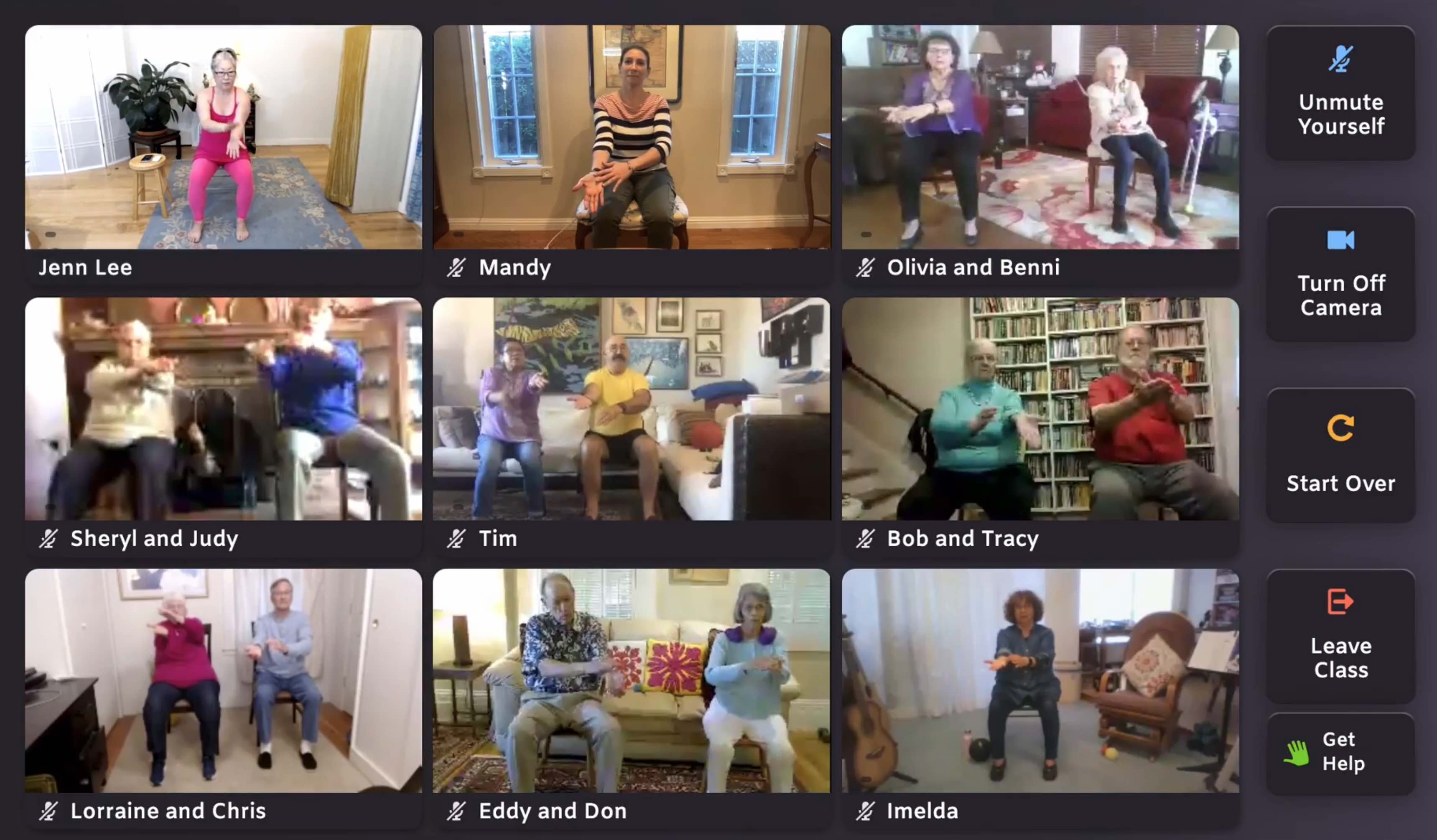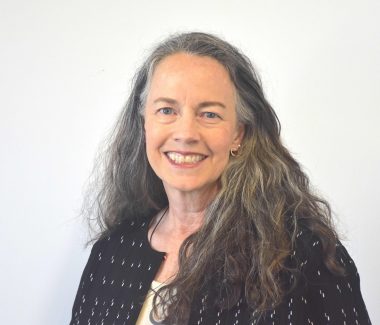Online Program Helps People Move Toward Better Health, Camraderie
Together Senior Health uses movement as a preventive for cognitive disorders
Written by |

When Dave Elliott was diagnosed with mild cognitive impairment in 2018, many services weren’t available to him and his wife, Susan.
Mild cognitive impairment is an early stage of losing memory or other cognitive abilities, such as language or visual/spatial perception.
The COVID-19 pandemic made it even more difficult for Elliott to find the help he needed to manage his condition. The couple couldn’t get a doctor appointment during the pandemic, and when they were finally able to secure one, it wasn’t at a convenient time for the 82-year-old Elliott.
“Unfortunately, the area that we are in, we got no attention,” said Elliott, who lives in Oakland, California. “I feel like Alzheimer’s is really weak in many areas.”
Before that, though, in 2019, the couple discovered an online movement class called Moving Together, designed for people with mild cognitive impairment, Alzheimer’s disease, and dementia. The program seemed to help slow Elliott’s disease progression, providing him opportunities to interact with people and form relationships while practicing repetitive movements that are vital for his daily living.
The Moving Together program called a ‘lifesaver’
“The whole program has been a lifesaver,” said Susan Elliott, who is her husband’s caregiver and participates in the class alongside him. “And as I always say to them, I wish we had more. I wish it would be available for us every day if we wanted to.”

David and Susan Elliott participate in the Moving Together program developed by Together Senior Health. (Courtesy of Together Senior Health )
The program was developed by Together Senior Health, which officially launched in 2017, to help teach people with mild cognitive impairment, Alzheimer’s, or dementia, and their caregivers how to be mindful of their bodies, guide them through functional movement exercises, and socially engage with other people in the online class. Instruction is done on a proprietary video conferencing web tool that’s designed for ease of use.
The company is running a clinical trial (NCT04621448) to determine the program’s effectiveness in up to 224 adults with memory loss in the U.S. Enrollment at its single site, the University of California San Francisco (UCSF), will close at the end of September. The next study is scheduled to launch in December.
The study is funded by three grants from the Small Business Innovation Research program, part of the National Institutes of Health’s National Institute on Aging.
Together Senior Health resulted from a college friendship
Cynthia Benjamin, co-founder of Together Senior Health, said incorporating movement into a person’s care can have two to three times better effect than medication can, citing research by Deborah Barnes, PhD, the company’s co-founder and chief science advisor. Barnes is a professor of psychiatry at Weill Institute for Neurosciences and a member of the Center for Population Brain Health, both at UCSF.
“She [Barnes] was looking at things that the drug studies don’t even touch, like reducing caregiver burden. Drugs don’t do anything there” for patients or for their quality of life, Benjamin said. “So she realized that there was a lot of opportunities to really impact people broadly.”
The company was spun out of a partnership between Barnes and Benjamin, who have been friends since college. A conversation over lunch sparked the idea that created Together Senior Health.

Cynthia Benjamin, co-founder of Together Senior Health, said bringing movement into a person’s care can bring physical, emotional, and financial benefits. (Courtesy of Cynthia Benjamin)
Barnes has spent a large part of her career looking at the connection between physical and mental exercises and clinical outcomes in Alzheimer’s, dementia, and mild cognitive impairment. She started an in-person version of the Moving Together class, known as Preventing Loss of Independence Through Exercise (PLIE) program.
PLIE was tested in a pilot Phase 1 trial (NCT01371214), which showed that it led to clinically meaningful improvements in physical performance, cognitive function, and quality of life in people with mild-to-moderate dementia.
The program was an opportunity to help payers (insurance companies and government-funded insurance) save money in the long term by helping people stay independent, reduce falls, and decrease social isolation for as long as possible.
“The physical benefits and the emotional benefits accrue to the members that we’re ultimately serving, but the financial benefits and the cost savings actually accrue to the payers,” Benjamin said.
Susan Elliott has seen firsthand how the program has achieved what Benjamin set out to do. The couple discovered a Moving Together pilot at their local Kaiser Permanente hospital. They continue to participate in the program as the company has offered it indefinitely to them and other initial participants.
About 550 people are enrolled in the program
Before entering the pilot, Dave Elliott had a fall and broke his wrist, but he hasn’t fallen once in the three years since they’ve been part of the program, his wife said. Plus, he’s practicing movements such as lifting his thigh, which can help him stay independent for as long as possible.
“If we didn’t have the support and this help, I don’t think he’d be doing as good as he’s doing,” Susan Elliott said.
“Our only alternative if he doesn’t participate and have programs here at home is he’d have to live away from home. And that’s not what he wants,” she added.
Around 550 people are now enrolled in the program across the clinical trial, continuation classes, and select Medicare or Medicaid plans. Together Senior Health employs four instructors to help lead its online classes. Groups meet twice a week for an hour, usually in the afternoon.
Benjamin said attendance is between 70%–80% and the service has a high net promoter score, a marketing measure that gauges a user’s satisfaction with a product.
The primary focus of these classes is functional movements that relate to activities of daily living. That could be the movement required to reach in and grab something from a cupboard or to step into and out of the shower. Breathing and mindfulness are also stressed throughout the exercises.
During breaks, socialization is encouraged. At the end of the session, participants do “appreciations,” where they share how they feel and what they’re grateful for.
Online classes remove the logistical ‘pain points’
Senior instructor Jennifer Lee has been teaching the classes since Barnes started running the pilot studies that would become Moving Together. Pivoting online made more sense during the pandemic and also ensured that caregivers could participate as well.
“The impetus to go online really was born out of including caregivers in the room and interviewing caregivers with multiple studies and learning that it was very challenging for caregivers to get their person up and dressed and drive and negotiate parking and find a place — all of those pain points,” said Lee, who is also a certified Feldenkrais Method practitioner.
“We considered maybe we can remove [the obstacles] by delivering this program online,” Lee added.
The current trial results look promising, Benjamin said, without revealing specifics because it’s still ongoing. Together Senior Health is measuring 14 data points on factors such as engagement, health events such as falls and emergency visits, quality of life, mobility, and cognitive function.
Those data points affect daily life for Dave and Susan Elliott, now veterans of the program. She loves to cook and one recent night she talked about making carrot walnut raisin almond muffins. She was shocked to discover the next morning that Dave had remembered and had gone into the kitchen to help grate the carrots.
Susan Elliott can’t help but think that that might not happen one day, but she’s grateful for Dave’s memory today, thanks in part to a consistent schedule that includes participating in Moving Together.
“We know [the scientists are] looking for a cure, but we are alive right now,” she said. “And we really need that support.”








